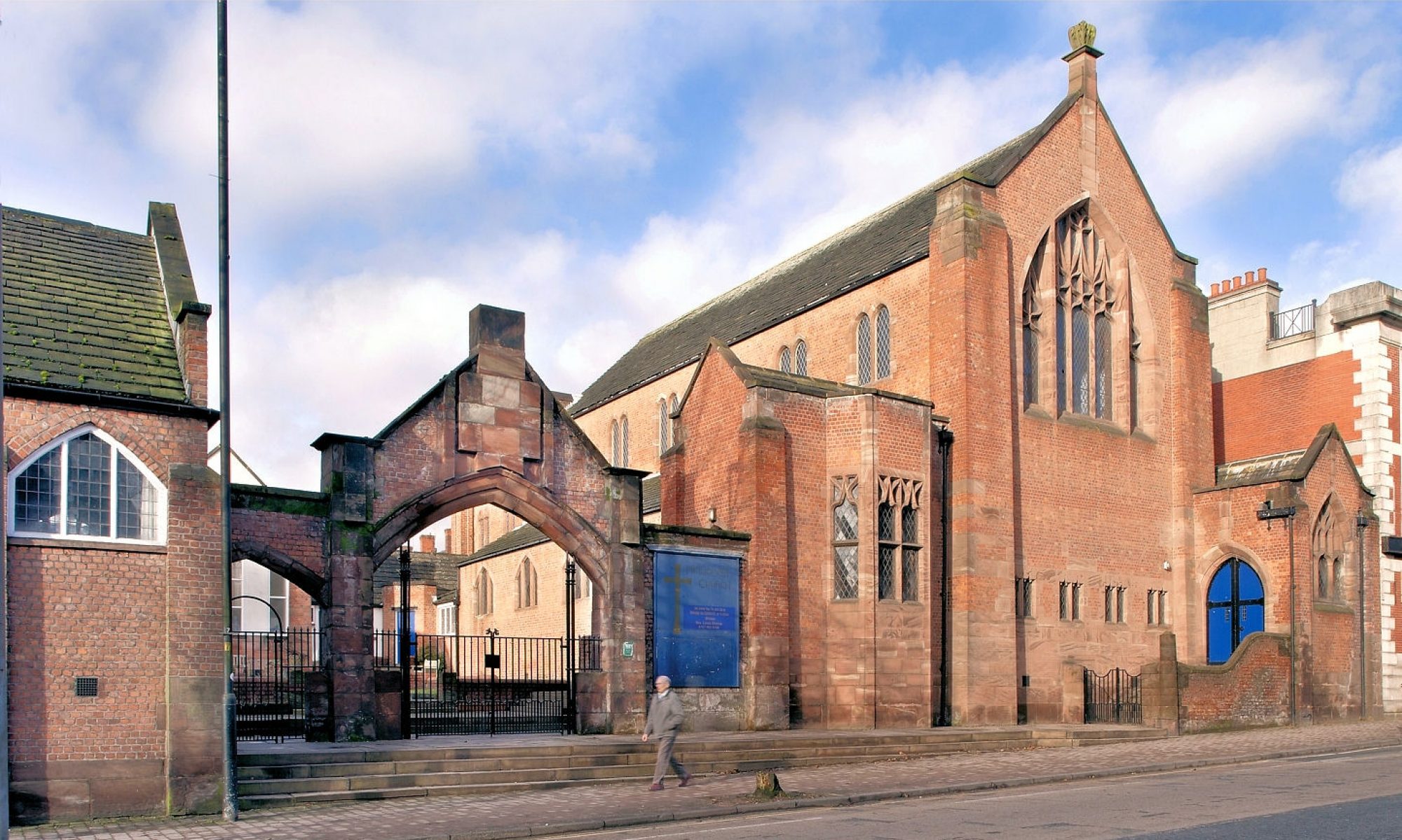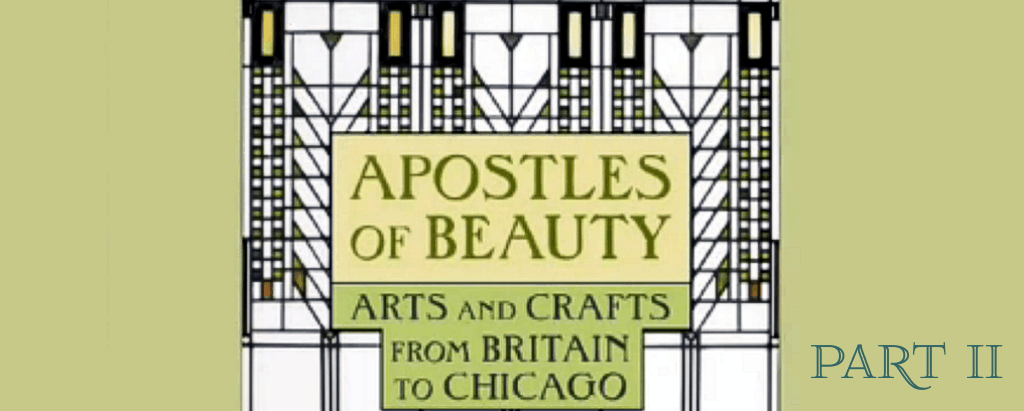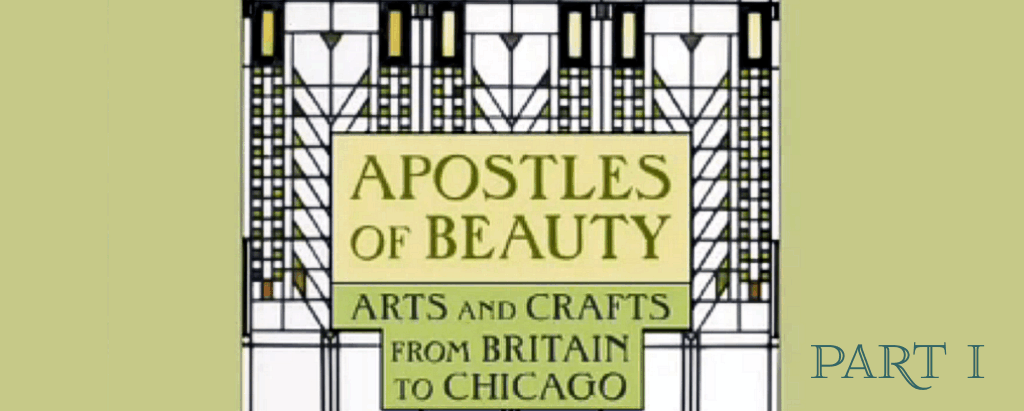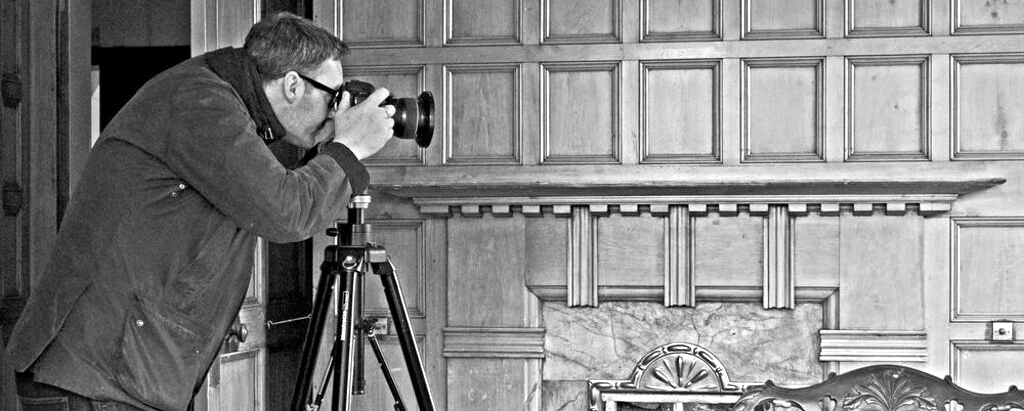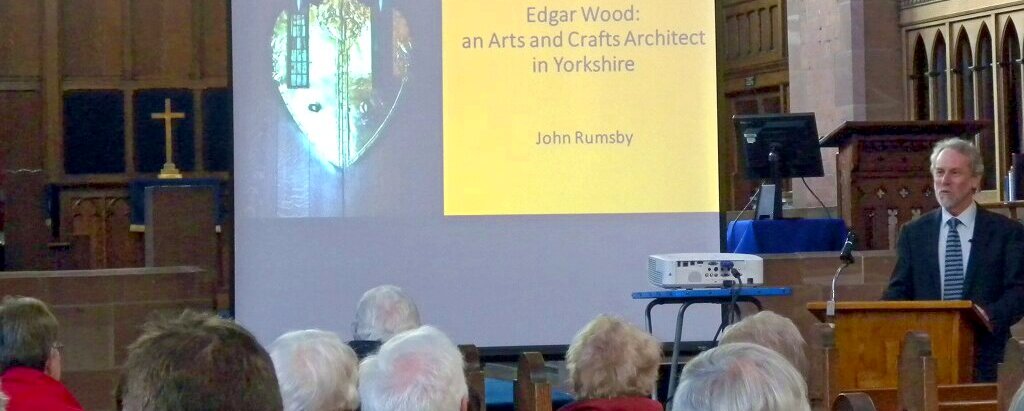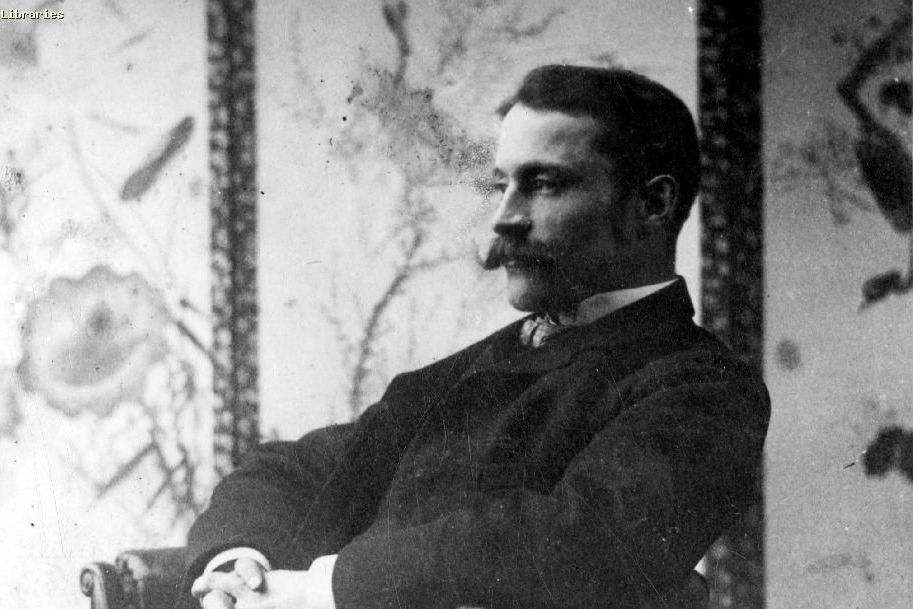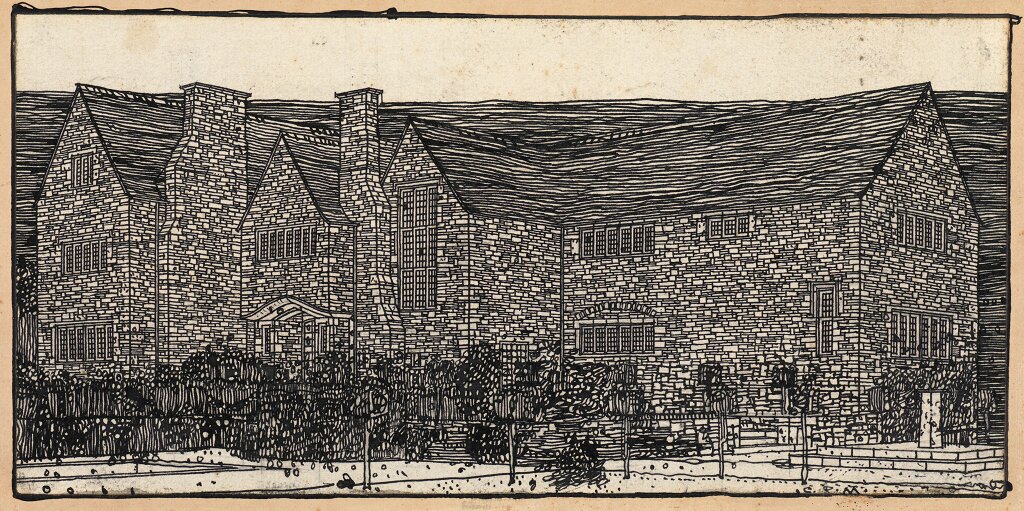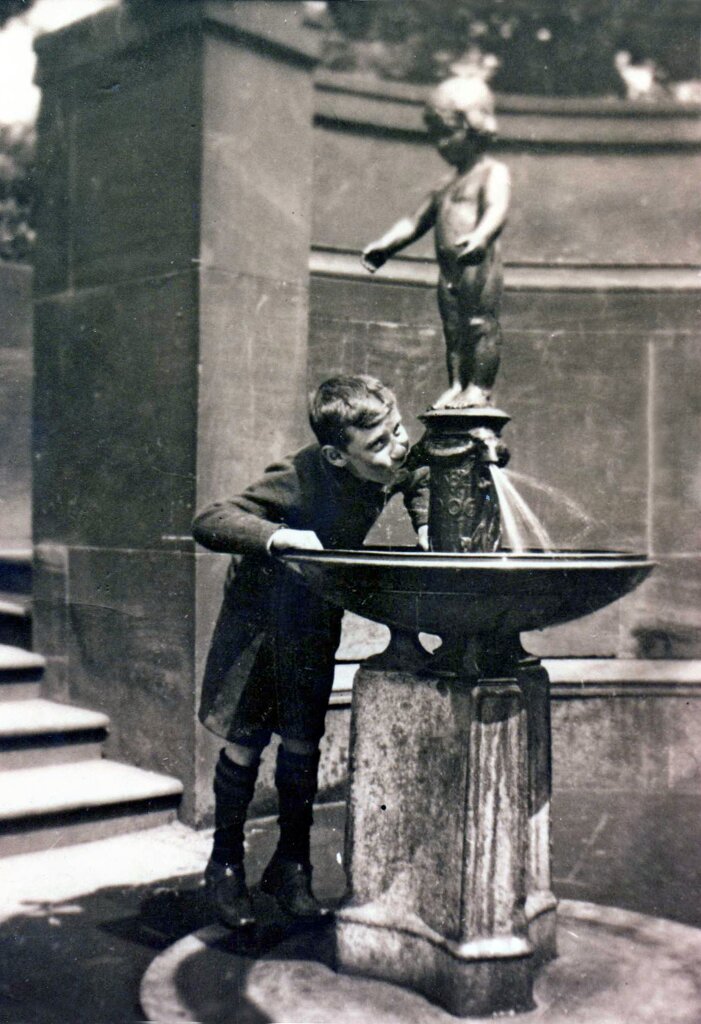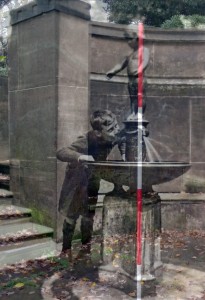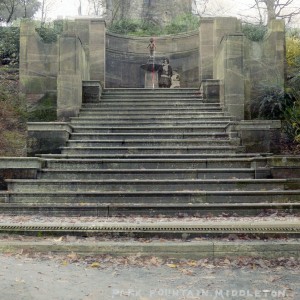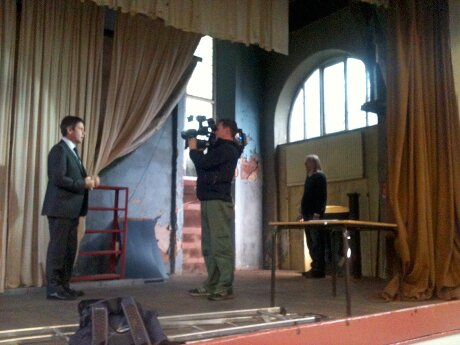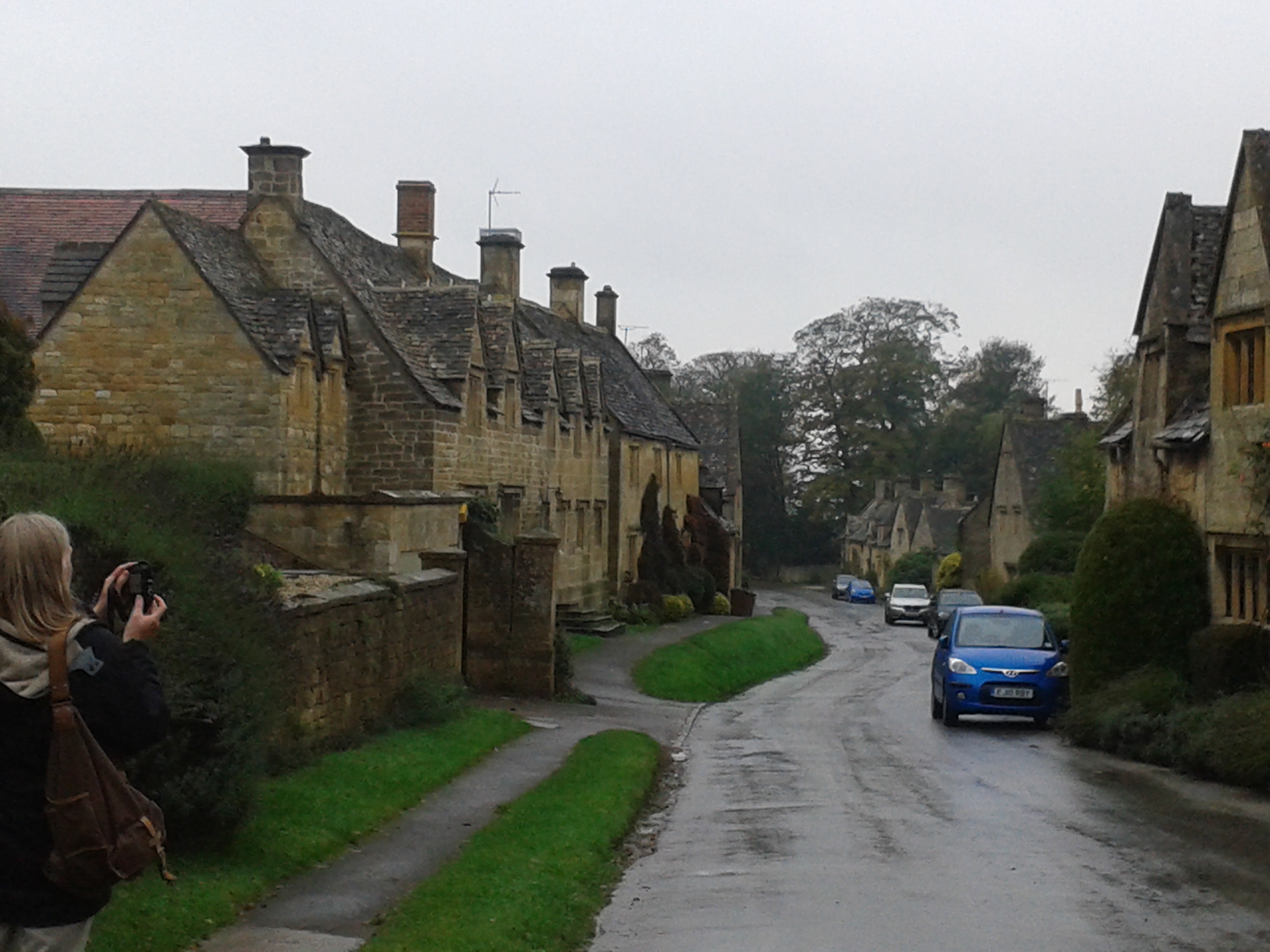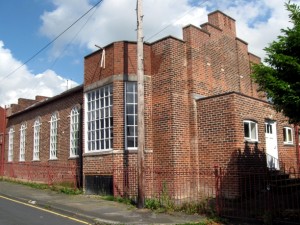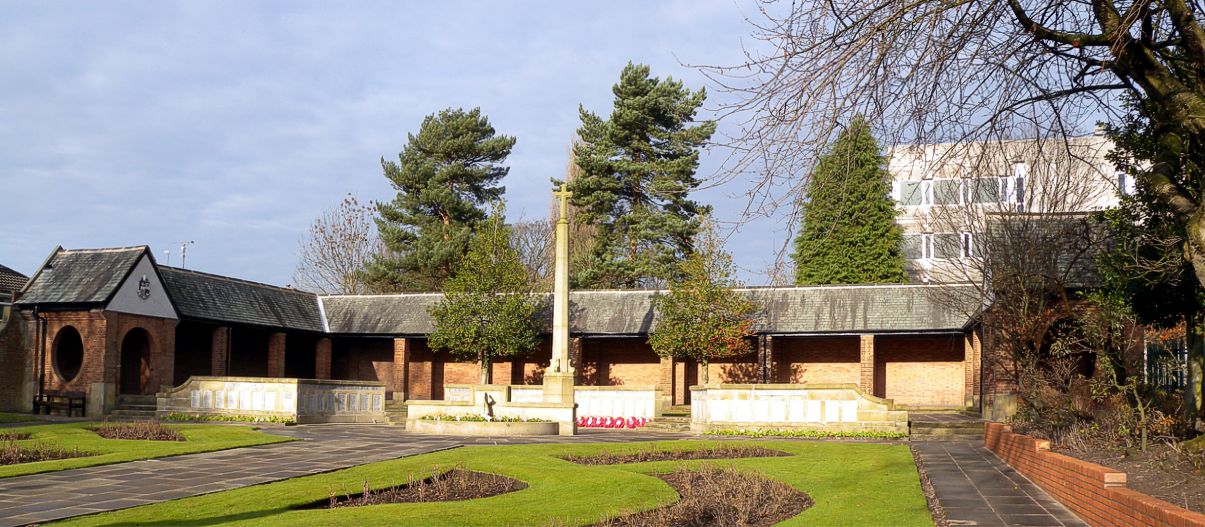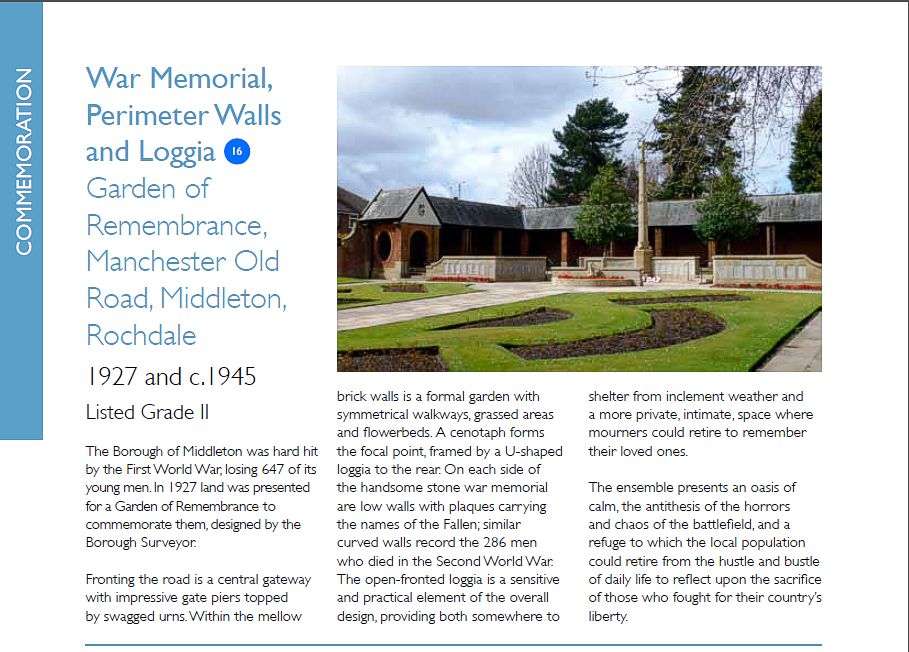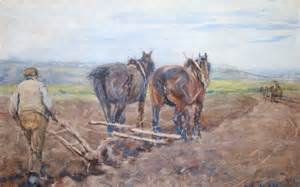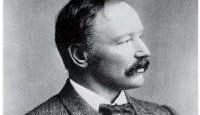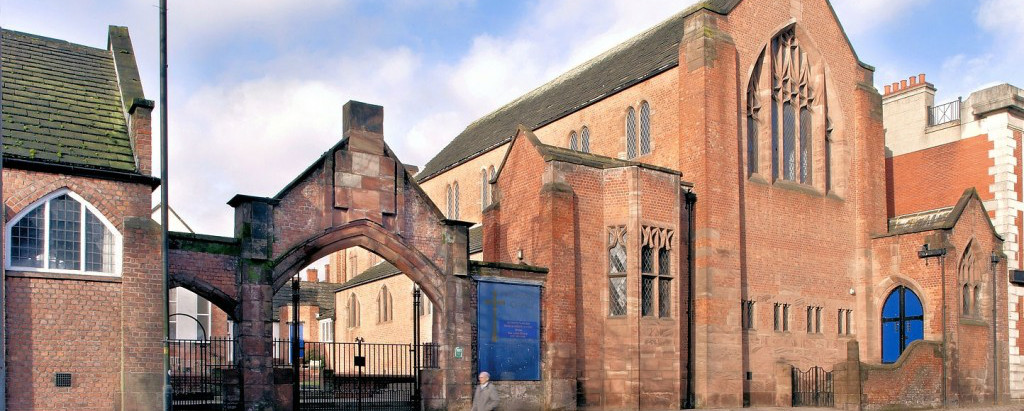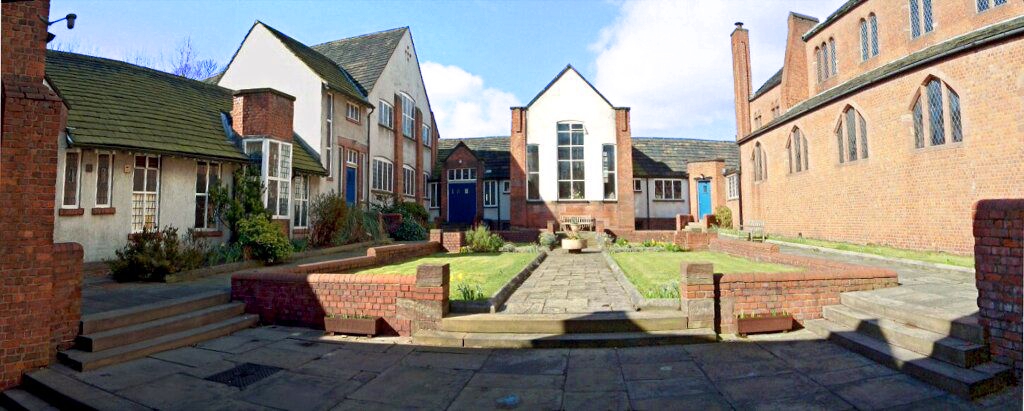This is the second of two short videos by Judy Barter on how the Arts & Crafts Movement started in Britain and moved to the USA. Judy Barter was the curator, author and editor of the 2010 Apostles of Beauty exhibition and book. The first is here.
Arts & Crafts – From Britain to the USA – Part I
Briarcourt thanks Edgar Wood Society
Part of the role of the Edgar Wood Society is to support owners of properties designed by Wood or his partner J. Henry Sellers. It is especially nice when an owner posts their appreciation as Vicky and Duncan have done on their blog about Briarcourt in Lindley, Huddersfield. See http://www.briarcourtrevisited.com/latest-adventures/2015/3/24/new-lenses
Sir Edwin Lutyens and Time Team
In case you missed this on TV, Tony Robinson examines the life and work of legendary Arts & Crafts architect Sir Edwin Lutyens, and joins the restoration of one of his iconic buildings, Castle Drogo. You can see it here.
Newly discovered Edgar Wood house is Listed
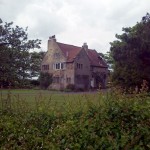

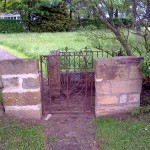
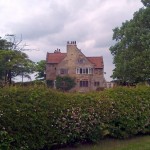 Edgar Wood is connected to the Staithes Group artists’ colony through his friendship with the Middleton born Staithes artists James W. Booth and, especially, Fred Jackson. In fact, the famous photograph of Fred Jackson with Laura Knight most likely shows Edgar Wood next to Jackson – wearing his trademark hat!
Edgar Wood is connected to the Staithes Group artists’ colony through his friendship with the Middleton born Staithes artists James W. Booth and, especially, Fred Jackson. In fact, the famous photograph of Fred Jackson with Laura Knight most likely shows Edgar Wood next to Jackson – wearing his trademark hat!
Recent research by several people has brought to light a previously unknown Edgar Wood designed house, The Croft at Hinderwell, near Staithes, built for Henry Silkstone Hopwood. Hopwood was a founder member of the Staithes Art Club of painters, becoming its chairman in 1902 when the house was built: a flat roofed outbuilding next to the house is thought to have originally served as artists’ studios used by club members.
English Heritage has now listed the building for its special historic interest and has now been published on the National Heritage List for England. Below are the details we have been sent.
Edgar Wood season kicks-off in Yorkshire
John Rumsby gave a great lecture on Edgar Wood’s wonderful Yorkshire buildings at the Arts & Crafts Church on Saturday afternoon (21st Feb).
It was Edgar’s mother’s family, the Sykes’ of Lindley, who welcomed the young architect to West Yorkshire. He eventually became its principal Arts & Crafts architect, inspiring many others to copy him. It is as though Wood lived a parallel architectural life there, his robust stone buildings being quite different to those in the Manchester area.
The audience were so impressed with the talk that the Edgar Wood Society is now planning a Yorkshire trip for the summer!
This was the first event in the 2015 Edgar Wood Society calendar. This year is dedicated to Edgar Wood and the Arts & Crafts Movement in the heritage Lottery Fund’s THI programme for Middleton.
Edgar Wood to feature in a book on Art Nouveau
The Edgar Wood Society is liaising with Ediciones Polígrafa, a prestigious publishing house based in Barcelona specializing in books on Art, Architecture and Design, printed in English and Spanish. Here is their web site.
Ediciones Polígrafa are currently working on, The World Atlas of Art Nouveau Architecture, edited by Ivan Bercedo and Jorge Mestre. It will have specialized contributions from all over the globe. Edgar Wood buildings will be included in the United Kingdom section, including Long Street Methodist Church. We are currently helping them out with photographs of Wood’s principal buildings.
Mackintosh Architecture Exhibition
Yesterday, 17th December, I travelled up to Glasgow to see the Mackintosh Architecture exhibition at the Hunterian Art Gallery, before it closes on 4th January 2015.
The exhibition is the result of a research project into Mackintosh’s buildings and the practice that he worked for, Honeyman and Keppie, later Honeyman, Keppie and Mackintosh. Elsewhere at the Hunterian, you can visit the internal recreation of Mackintosh’s house and see his travel sketches and paintings.
There are no new major discoveries. Instead, the exhibition tries to rebalance the myths – the doomed romantic, Scottish nationalist, pioneer modernist etc. – simply by showing his drawings and the networks of professionals and patrons in which he worked. Through this everyday evidence you see another Mackintosh emerging, a team player and an exemplary professional working for one of Glasgow’s major architectural practices.
All of the famous drawings are exhibited and what immediately surprises is how large they are, much bigger than the prints in books. You can see his immaculate draughtsmanship, by which he stood out from his contemporaries. The work of Honeyman and Keppie is also shown. They were fine architects working in the styles of the day rather than Mackintosh’s Art Nouveau. There was quite a lot of collaboration between all three designers and Mackintosh could work just as well in the traditional styles, if he needed to.
 Mackintosh’s four large houses are highlighted. In these, his architectural progression is the reverse of other progressive designers, running from the almost abstract Windyhill to the highly expressive Hill House, to the Jacobean Auchinibert (featured drawing above) and finally to the vernacular Mossyde. You can see him absorbing ideas from the English Arts & Crafts movement, initially at Auchinibert, partly through the preference of the client. Mackintosh’s final house, Mossyde, shows him fully resolved as a vernacular Arts & Crafts designer – an astonishing change from Hill House of only a few years earlier. Mackintosh was an architect who could develop and embrace new ideas. It is a shame that architectural work dried up after 1910 then stopping completely in the First World War. Who knows what he may have otherwise produced?
Mackintosh’s four large houses are highlighted. In these, his architectural progression is the reverse of other progressive designers, running from the almost abstract Windyhill to the highly expressive Hill House, to the Jacobean Auchinibert (featured drawing above) and finally to the vernacular Mossyde. You can see him absorbing ideas from the English Arts & Crafts movement, initially at Auchinibert, partly through the preference of the client. Mackintosh’s final house, Mossyde, shows him fully resolved as a vernacular Arts & Crafts designer – an astonishing change from Hill House of only a few years earlier. Mackintosh was an architect who could develop and embrace new ideas. It is a shame that architectural work dried up after 1910 then stopping completely in the First World War. Who knows what he may have otherwise produced?
The stripping away of the myths allows Mackintosh’s true genius to come to the fore – that of a professional architect and designer of the highest calibre who buildings inspired many of his own generation and many more in subsequent generations.
Could Jubilee Park Fountain be Restored?
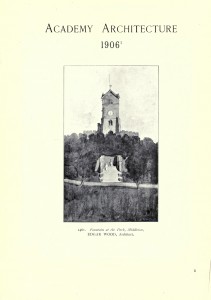 Edgar Wood Society and Greater Manchester Building Preservation Trust are looking into the history of Jubilee Park Fountain and whether it is possible to restore it.
Edgar Wood Society and Greater Manchester Building Preservation Trust are looking into the history of Jubilee Park Fountain and whether it is possible to restore it.
The fountain with its staircase and curved ‘exedra’ was donated by Thomas Broadbent Wood in 1906. He was a greatly regarded Middletonian and father of Edgar Wood, who designed the structure. The design was drawn in 1905 and was so unusual and interesting that it was displayed in the Royal Academy in London and used as the cover for its annual architectural journal, Academy Architecture.
Unfortunately, the fountain no longer exists. If you know what happened to it, or if any part of it survives even if damaged, please let us know by emailing edgarwoodsociety@gmail.com.
Finding any remains would allow us to accurately measure them. However, historian and writer, Harold Cunliffe, has let us have two old photographs which allow us to work out the dimensions almost as well. The trick is to find the exact point from which the old photo was taken, both horizontally and vertically, by carefully working off the photograph.
Then you retake the picture today with a measuring staff set at exactly the position of the fountain and its sculpture. You then merge the photographs in a photo-editing program like The Gimp. Vertical measurements can be read off the staff while horizontal measurements are likewise worked out by digitally turning the rule on the staff. With such measurements, a mason and sculptor could replicate the design very accurately, using the photos for the details.
These are our first attempts just using a ranging pole, as we currently don’t have a measuring staff. The photos are very close to the original viewing point and the result is very encouraging. Next time, we hope to get it spot on! Even so, they have already shown that the bottom two steps, where the stone has recently been stolen, were not part of Edgar Wood’s design at all but were added later. Click on the photos to enlarge them…
This technique was used to restore the original gateposts and fencing to Edgar Wood’s 36 Mellalieu Street. It was inspired by Edgar Wood’s own technique of the ‘measured sketch’ that is sketching old buildings and features and then measuring them. This meant he could accurately recreate the historic features in his own buildings.
Birth of ‘Vernacular Romanticism’ talk by Nick Baker – 25th October 2014
Nick Baker is a student of Arts and Crafts and modern design and is an expert on Edgar Wood. His lecture on Saturday gave us an insight into the wider world of Arts and Crafts architecture and how Wood fitted into the bigger picture in the years 1887-99. It was a great talk, full of knowledge and ideas. As well as Wood, Nick talked about Voysey, Shaw, Baillie-Scott, MacLaren, Prior, Lutyens and Gimson – a roll call of great designers from that time. Presumably, his next talk will be about the period 1900 to 1914… let’s hope so!
BBC comes to Long Street Arts & Crafts Church…
Yesterday was one of those special days…. With just a few hours notice, BBC Radio and TV turned up to film the church and school. Why? Because English Heritage has just added the Long Street buildings to the national Heritage at Risk register, which is updated and published every year.
 First off, was BBC Radio Manchester and the Allan Beswick morning show – we were on towards the end and at 8.30am a presenter and radio technician came knocking at our door. Nick, David, Nick (from the Council) and Tim (from English Heritage) were there to welcome them and quickly show them around. Michelle, the presenter decided to have a live description from the Lecture Room looking into the garden and then a walk into the church via the vestry. We were all very nervous but they quickly put us at ease and it was a great experience being with such professional media people.
First off, was BBC Radio Manchester and the Allan Beswick morning show – we were on towards the end and at 8.30am a presenter and radio technician came knocking at our door. Nick, David, Nick (from the Council) and Tim (from English Heritage) were there to welcome them and quickly show them around. Michelle, the presenter decided to have a live description from the Lecture Room looking into the garden and then a walk into the church via the vestry. We were all very nervous but they quickly put us at ease and it was a great experience being with such professional media people.
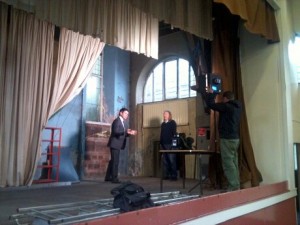 Having relaxed from our radio experience, TV came knocking at our door at 11am with Mark Edwardson, the NW Tonight presenter and cameraman. They wanted to do a slot for NW Today at lunchtime and a longer slot for the early evening NW Tonight. Again, we all gave them a tour round and they quickly got up to speed. They chose the corner of the School Hall stage for the shorter NW Today shoot as there is a good bit a grot there! As this was not live, they did three takes and then disapeared to edit and upload the film, while we had a sandwich or two.
Having relaxed from our radio experience, TV came knocking at our door at 11am with Mark Edwardson, the NW Tonight presenter and cameraman. They wanted to do a slot for NW Today at lunchtime and a longer slot for the early evening NW Tonight. Again, we all gave them a tour round and they quickly got up to speed. They chose the corner of the School Hall stage for the shorter NW Today shoot as there is a good bit a grot there! As this was not live, they did three takes and then disapeared to edit and upload the film, while we had a sandwich or two.
By now, Mair from English Heritage had replaced Tim and it was decided that three of us would be interviewed for the NW Tonight shoot. However, when setting up on the Hall balcony, Mark, the cameraman, got a large carbon fibre spinter in his finger from his tripod. This requires hospital A&E treatment so he had to go off imediately leaving Mark the presenter having to do the whole thing on his own, with a small backup camera he had in his car.
We now experienced BBC professionalism at its best as Mark Edwardson worked out a new 1 minute 45 second shoot in his head and then set-to using his little camera and a tripod. All the professional tricks came out – off-camera interviewing of Mair and Nick, Mark speaking to the camera on the tripod (he did six takes of the introduction in front of the crumbling wall of the stage), distant shots in the garden of David and Nick and a walk past with David, all blended together with stills of the building and its materials. It was a tour de force of improvisation.
New William Morris exhibition
It runs from October to January next year.
Cotswolds – Arts & Crafts inspiration
Edgar Wood’s Independent Labour Party Club Listed!
Great news for Middleton’s heritage – the Government and English Heritage have listed the Independent Labour Party Club on Milton Street as Grade II. This followed the submission of a scheme to convert it into flats. The listing specifically protects the inside as well as the outside of the building as being of special historic and architectural interest.
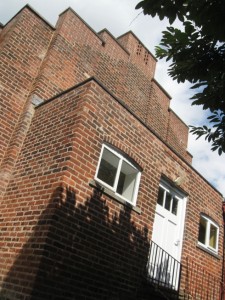 We are grateful to English Heritage for assessing the building in such a short time and to Nick Baker for such great photos..
We are grateful to English Heritage for assessing the building in such a short time and to Nick Baker for such great photos..
Another building of Midddleton’s Golden Cluster receives official recognition. We look forward to sensitive proposals to secure its future for the long term.
Here are the English Heritage listing documents, hot off the press…
Middleton Garden of Remembrance is highlighted in English Heritage annual report
James William Booth
James William Booth (1867-1953) Booth was a leading member of the Staithes Group. He studied at Manchester School of Art under Elias Bancroft. He was a friend of Fred Jackson. Bancroft and Jackson visited Whitby and Hinderwell to paint and Booth followed. He initially shared a studio with Laura and Harold Knight in Staithes. Booth was a member of the Manchester Academy and the Royal Cambrian Academy.
See http://www.bbc.co.uk/arts/yourpaintings/artists/james-william-booth
Frederick Jackson
From http://www.fwjackson.co.uk/
Frederick William Jackson was born in 1859 at Middleton Junction. He was one of three children, and his father worked as a photographer in Oldham. His two brothers were Vincent Jackson, a musician trained at Leipzig Conservatoire, and Charles Arthur Jackson, who was an art dealer and owned a gallery at 7 Police Street, Manchester. Charles gave considerable support to Frederick during his career, helping with both money and materials. Many of Jackson’s pictures bear labels inscribed with the address of his brother’s gallery.
Jackson had relatively little formal training. His interest in painting was evident from an early age: as a boy, he went on sketching tours with his friend, the future architect, Edgar Wood. After leaving school, he attended evening classes at Oldham School of Art, where he studied painting under John Houghton Hague. (William Stott of Oldham was another of Hague’s pupils).
John Houghton Hague’s brother, Joshua Anderson Hague, was the leader of a group of young artists known as the ‘Manchester School’. Nearly all these artists had been trained at Manchester Academy of Fine Art and they met together in Wales at the studio of the self- taught, Joseph Knight, in the early 1870’s. They were influenced by the Barbizon School of painters and by Israels, Mauve and Maris, and they made a number of trips to Brittany between 1871 and 1878. The group was making, a considerable impact in the mid 1870’s and Jackson was drawn towards them, being influenced by their choice of subject matter and style of tonal painting. Academy where he attended life classes for six months. In 1880, he went to live in North Wales, where the artists H. Clarence Whaite, Joshua Anderson Hague and Edward Norbury were planning to found the Royal Cambrian Academy. He joined the already considerable number of Manchester artists living in the Conway Valley.
The 1880’s was an important decade for Jackson. He was made a member of the Arts Club in 1879 and a member of the Limners Club in 1880-1. Following the Manchester Academy exhibitions of 1880 and 1881, he was elected a member of the Manchester Academy of Fine Art. Over the next few years, he exhibited a good deal of his work, including two coast scenes at the Paris Salon in 1884 and “two splendid landscapes” there in 1885. In 1886, he became a founder member of the New English Art Club. He did not join its ten more progressive members (including Sickert and Steer) who worked in an Impressionistic as opposed to Barbizon inspired manner, and he did not exhibit at their separate exhibition of 1898 entitled ‘The London Impressionists’. In 1894, Jackson became a member of the Royal Society of British Artists. Throughout the ’90’s, and probably through his friendship with Edgar Wood, he became involved in the Arts and Crafts Movement. It was at this point that he did a number of mural paintings. His affinity with the Movement is evident in other areas of his work – his wash drawings to illustrate works by local dialect writers, Ben Brierley and Samual Laycock for example and his oil paintings of hand spinning and handloom weaving.
Returning from Wales, he went to Paris where he studied under Lefebvre and Boulanger. He remained in France for four or five years. It is most unlikely that he was influenced by those masters who taught him in Paris – they worked in a meticulous and academic style favoured by conservative French art lovers of the day, and totally alien to his own approach. At this time, Rochdale born Edward Stott was also in Paris, Studying under Carolus Duran, and Oldham-born William Stott and Henry Herbert La Thangue were studying under J. L. Gerome. During this period, the work of the Barbizon school painters was being hung in the Salon and Impressionism was at its height – with the stir it had caused still very much in evidence! (The first Impressionist Exhibition had been held in 1874 and the last was to be held in 1886).
After completing his studies in Paris, Jackson visited several European countries, spending most of his time in Italy, in Capri, Venice, Florence and Rome. He also visited Morocco before returning to England. He settled at Ivy Cottage, Hinderwell near Whitby, marrying Carrie Hodgeson, the daughter of a Yorkshire farmer. From there he exhibited frequently at the Manchester Academy and at the annual exhibition of the Yorkshire Union of Artists, as well as in London.
After 1900, Jackson travelled to Russia, France and Italy and, as some of his contemporaries noted, his late landscapes executed in these included some of his finest work. Jackson was liked and respected in his day and praised as an artist. It was generally felt that he could have achieved the distinction of R.A. had it not been for his reticence and modesty. He died in 1918 aged 59 and was buried in his native Middleton.
Edgar Wood
Edgar Wood was an architect, artist, craftsman, conservationist and town planner. At the beginning of the Twentieth Century, he had a national and international reputation and was regarded as the most important avant-garde architect in the north of England.
Wood was born into a wealthy Middleton family in 1860. From an early age he had a passion for art and spent hours sketching with his friend, Fred Jackson, who later became a prominent artist. Wood instead trained as an architect, though he viewed architecture as an “art”. He filled his buildings with beautiful furniture, stained glass and paintings, often of his own design or making. Jackson and Wood sometimes co-operated on painting murals for his buildings.
As an architect, Wood rejected large scale commercial practice and worked as an artist with a small number of assistants designing furniture, stained glass, sculpture, metal and plaster work as well as buildings. Many commissions were from friends and family in Middleton, Huddersfield and Hale. Influenced by the artistic and socialist writings of William Morris, he saw himself as an artisan serving the people of these localities.
Architecture was changing. The Victorian Gothic style was on the wane and architects were looking for a new way to design. Art Nouveau was a new style based on extended lines and sensuous curves. It was used for buildings, sculpture, painting and the graphic arts. Arts & Crafts, another approach, revived traditional building techniques to create beautiful yet practical buildings. It stressed honest craftsmanship, handmade quality and the importance of art in everyday life. Edgar Wood was a leading practitioner in both.
Wood’s early buildings revived vernacular features, crafts and techniques. They were richly detailed and very romantic. Later, his larger buildings took on strange Art Nouveau forms, confirming his avant-garde reputation. Gradually, a plainer style emerged with decoration carefully placed in specific places.
At the height of his fame, Wood worked with an Oldham architect, J. Henry Sellers, and created a series of radical new buildings of a type unseen before. With their flat reinforced concrete roofs and sometimes geometric patterns, they were among the first examples of “modern architecture” in Europe.
Edgar Wood constantly sought new architectural expression in practical and well planned buildings. Today, he is regarded as someone ahead of his time; for example, his avant-garde designs anticipate Expressionist architecture of the 1920s and Art Deco of the 1930s.
Arts & Crafts Church – 1899 architect Edgar Wood
Long Street Methodist Church & Schools are a striking complex of connected buildings arranged around a courtyard garden – the finest Arts and Crafts Methodist Church anywhere.
Edgar Wood’s church has a simple, strong and memorable appearance but with delicate surfaces where colour and texture prevail. Seen close up from the street, the church soars dramatically. It is built of subtly textured brickwork and almost identically coloured red Runcorn sandstone which runs organically up the building like no other. The organic looking tracery of the two large windows at each end of the church is un-mistakedly Art Nouveau and the one facing the road grows upwards to form a finial with a plant-like top. While recognisably a church, the design was the most the modern and forward-looking in England when built in 1899.
The internal styling is plain, simple and modern with a very controlled visual scene with the same stripy red sandstone and subtle header bond brickwork found outside. It is a very peaceful space, large but not overpowering. All the windows have plain leaded glass, so pure white light illuminates the church. However, little coloured Arts & Crafts leaded windows in the doors glow when the light catches them. The chancel is marked by a line of Art Nouveau fittings – a pulpit, lectern and font all connected by a matching stone chancel wall. Beyond this, the chancel is intimate with Art Nouveau pews, chairs and kneelers.
The open roof space is designed with alternating hammer beam and scissor trusses with the underside of the trusses catching the light from the windows. With a brilliant touch, Wood fixed small square timber caps to alternating trusses thereby giving the roof a rhythm drawing the eye along the nave and chancel to the windows at each end.
The church is a true expression of the Arts & Crafts – nothing is showy or pretentious and everything is harmonious save for the occasional modern alteration.
Arts & Crafts Church, School and Garden – 1899 architect Edgar Wood
Long Street Methodist Church & School are a striking complex of connected buildings arranged around an ‘outside room’ garden. Across this space, Edgar Wood integrates a series of opposites – sacred and secular, expression and restraint, axial and informal, and, rational and romantic. The plain and simple mass of the church contrasts with the complexity and richness of the school buildings where there is a unique character, somewhere between a formal composition and a romantic street scene.
Unfortunately, time has eroded the outstanding qualities of the garden and its buildings. To rectify this, Greater Manchester Building Preservation Trust and Arts & Crafts Awakening are pursuing heritage grants to restore the design to the designers intentions, as far as can be achieved. Once restored the garden will look something like this…
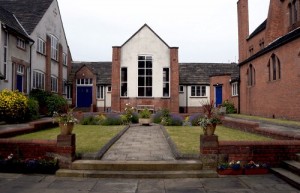

Taken together, the Methodist church, school and garden are finest expression of Edgar Wood’s attempts to synthesize tradition and modernity. These artistic buildings and spaces feel simultaneously both ancient and modern, where the rational and romantic are harmoniously intergrated.
